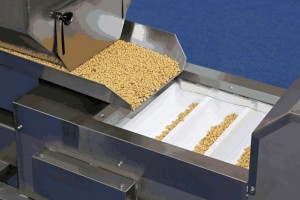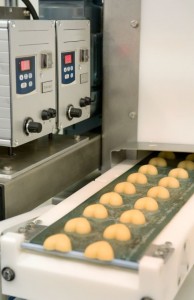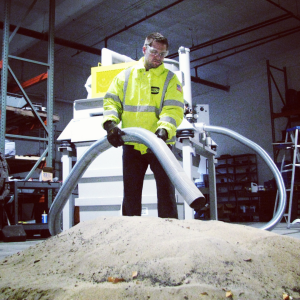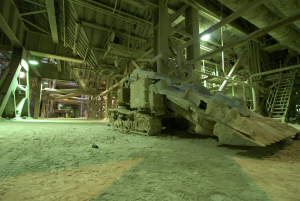 Crystalline silica, often referred to simply as “silica,” is an important industrial mineral that is found in stone, soil and sand, as well as in concrete, brick, mortar and a number of other materials. Prolonged exposure to silica dust, produced while drilling these materials, can lead to illnesses, particularly silicosis and even lung issues.
Crystalline silica, often referred to simply as “silica,” is an important industrial mineral that is found in stone, soil and sand, as well as in concrete, brick, mortar and a number of other materials. Prolonged exposure to silica dust, produced while drilling these materials, can lead to illnesses, particularly silicosis and even lung issues.
According to the Centers for Disease Control and Preventions, at least 1.7 million U.S. workers are exposed to crystalline silica in a variety of industries and occupations, including construction, sandblasting and mining. Processes traditionally associated with high rates of silicosis include sandblasting, sand-casting foundry operations, mining, cement cutting, masonry work and granite cutting, as these processes frequently generate silica dust.
Although silicosis caused by exposure to silica dust can’t be cured, it can be prevented.
While there are multiple methods to minimize silica dust in the workplace, HEPA (High Efficiency Particulate Air) filter industrial vacuum cleaners are often preferred because they can completely collect and retain silica dust without dispersing it back into the environment.
In addition to general cleaning to remove dust accumulations on exposed surfaces, HEPA industrial vacuums can be used in a couple other ways to keep silica exposure limits to a minimum.
For example, consider using vacuum-assisted power tools in conjunction with HEPA-filter industrial vacuums, integrating the vacuum hose into the power tool to quickly and easily suck up dust and debris while the operator simultaneously drills or sands. Another example is to use industrial vacuums to sanitize worker clothes, removing excess silica debris from clothes and uniforms, perhaps and positioning portable industrial vacuum units at the exits of silica work areas.
A HEPA filter industrial vacuum cleaner can be customized to meet these demands, and manufacturers should view the addition of a quality HEPA vacuum as an investment to ensure a safe and healthy workplace.
 The food and beverage industry recalled about 8.5 million units of products in the first quarterof 2013. Based on
The food and beverage industry recalled about 8.5 million units of products in the first quarterof 2013. Based on  Of course, industrial vacuums come in many different forms to satisfy specific applications for the food industry. Here are a few industrial vacuum features to look for in the maintenance needs of the food industry:
Of course, industrial vacuums come in many different forms to satisfy specific applications for the food industry. Here are a few industrial vacuum features to look for in the maintenance needs of the food industry: Immediately vacuuming these materials is the best way to keep work areas clean and safe. Whether to rent a vacuum truck rather than make the investment in a permanent facility-based vacuum system is the choice that management faces. So what are the differences between the two options?
Immediately vacuuming these materials is the best way to keep work areas clean and safe. Whether to rent a vacuum truck rather than make the investment in a permanent facility-based vacuum system is the choice that management faces. So what are the differences between the two options? Volume of Clean-up: A productive factory or manufacturing facility will always be producing scrap materials, production dust, regular dirt and other liquids or dry materials that need to be cleaned on a consistent basis in order to keep the shop environment safe and healthy. This volume of material could easily overwhelm even the largest rental vacuum trucks in one visit, let alone several visits, especially if utilized over longer periods of time. An in-house vacuum system would be configured to accommodate the current and anticipated volume of garbagelike material and easily clean it up on either a daily or weekly basis.
Volume of Clean-up: A productive factory or manufacturing facility will always be producing scrap materials, production dust, regular dirt and other liquids or dry materials that need to be cleaned on a consistent basis in order to keep the shop environment safe and healthy. This volume of material could easily overwhelm even the largest rental vacuum trucks in one visit, let alone several visits, especially if utilized over longer periods of time. An in-house vacuum system would be configured to accommodate the current and anticipated volume of garbagelike material and easily clean it up on either a daily or weekly basis. The future can be unpredictable, particularly where business processes and disruptive technologies collide. In a recent series of 30 interviews with CIOs and chief innovation officers from such enterprises as Dell, SAP and AT&T, all respondents said they felt they are facing “once-in-a-lifetime change” and that “the changes would continue at pace.”
The future can be unpredictable, particularly where business processes and disruptive technologies collide. In a recent series of 30 interviews with CIOs and chief innovation officers from such enterprises as Dell, SAP and AT&T, all respondents said they felt they are facing “once-in-a-lifetime change” and that “the changes would continue at pace.” After analyzing the mineral components of a concrete breakwater sample dating back to 37 B.C., researchers have discovered that the secret to superior Roman concrete – one of the world’s most durable construction materials – lies in its unique mineral formulation and production technique.
After analyzing the mineral components of a concrete breakwater sample dating back to 37 B.C., researchers have discovered that the secret to superior Roman concrete – one of the world’s most durable construction materials – lies in its unique mineral formulation and production technique. Today’s concrete and the one that’s been in use for nearly 200 years, doesn’t utilize the Roman mixture of lime-and-ash that made their formula a unique and stable binder.
Today’s concrete and the one that’s been in use for nearly 200 years, doesn’t utilize the Roman mixture of lime-and-ash that made their formula a unique and stable binder.